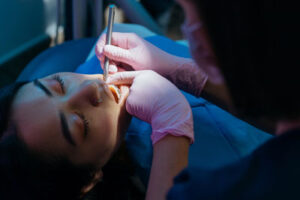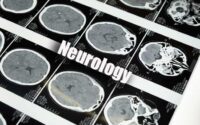Dental Surgeon Questions and Answers BDS and MDS Students
Looking for Dental surgeon Questions and Answers Model Paper Pdf then you are on the right page. Here candidates can find the study material & model paper on dentistry for the Recruitment and MDS Entrance Exam.

Hence, click on the respective link in the table below and start downloading the Dental surgeon Questions and Answers Question Paper Pdf for free. We have given the free Dental surgeon Questions and Answers model question paper with answers to help the candidates.
Hence, go through the article and find the respective Dental surgeon Questions and Answers Paper and start your preparation. Aspirants who are going to appear for dentistry online written examination are advised to check the syllabus and exam pattern before starting preparation.
The aspirants who are going to attend the Written Exam can start downloading the Model Question Papers of Dental surgeon Questions and Answers. The direct links enclosed below to get the PDFs of Dental surgeon Questions and Answers Previous Papers along with the Solutions.
Interested candidates can refer to the below links for downloading the Dental surgeon Questions and Answers Sample Papers.
Dental Surgeon Model Papers
1. Periodontal attachment loss detect clinically:
(A) When there is recession only
(B) When there is recession and or I true pocket
(C) When there is radiographic alveolar bone loss
(D) When there is true pocket only
2. Periodontal attachment loss measure clinically from :
(A) Gingival margin to the base of the pocket
(B) CEJ to the gingival margin
(C) CEJ to the base of pocket
(D) CEJ to the functional epithelium
3. 16 years old boy, present clinically with attachment loss related to 1st molars and incisors only. Diagnosis of this case according to AAP 1999 periodontal diseases classification is :
(A) Localized aggressive periodontics
(B) Generalized aggressive periodontitis
(C) Generalized juvenile periodontitis
(D) Localized juvenile periodontitis
4. Planning of periodontal surgery is best accomplished at : –
(A) Phase 1 therapy
(B) After phase 1 therapy and before re-evaluation
(C) After phase 1 therapy and during re-evaluation visit
(D) Can be planned at any phase of periodontal therapy
5. Most commonly used periodontal pack is I are :
(A) Zinc oxide Eugenol pack
(B) Non Eugenolnack
(C) Coe-Pack
(D) Both(B)and(C)
6. Anatomic areas which can be used as a source for bone graft harvest for periodontal regenerative surgical procedure :
(A) Premaxilla
(B) Maxillary tuberosity
(C) External oblique ridge
(D) Both (B) and (C)
7. Which is the correct classification of periodontal surgery?
(A) Periodontal flap surgery, periodontal plastic surgery, respective osseous surgery
(B) Transalveolarsurgery, implant surgery, respective osseous surgery
(C) Ginglval curettage, periodontal flap, surgical extraction
(D) Gingivectomy, regenerative periodontal surgery, surgical closure of oro-antral fistula
8. Adult patient presentclinlcally with irregularthickness ofbuccail gingiva, a round diamond bur used to correct and establish a physiological gingival contour:
(A) Gingivoplasty
(B) Gingivectomy
(C) Both (A) and (B)
(D) Gingival curettage
9. 40 years diabetic patient, present clinically with periodontal attachment loss and diagnosed as having periodontitis. According to AAP 1999 classification of periodontal disease:
(A) Aggressive periodontitis
(B) Chronic periodontitis modified by systemic condition
(C) Periodontltis as a manifestation of systemic disease
(D) Juvenile periodontitis
10. Length of functional epithelium :
(A) 0.25 to 1.35 mm
(B) 0.30 to 1.45 mm
(C) 0.18 to 1.22 mm
(D) 0.15 t0 1.25 mm
11. Maximum amount of lignocaine given with adrenaline: –
(A) 4.4 mg / kg body wt.
(B) 10 mg / kg body wt.
(C) 6.6 mg / kg body wt.
(D) 2 mg / kg body wt.
12. Absolute contraindication for lignocaine:
(A) Bisulphite Allergy
(B) La allergy
(C) Methhemoglobinemla
(D) Both (A) and (B)
13. Upper eyelid droops over the lower eyeiid to haif its extent :
(A) Verriis signs
(B) Guerrins sign
(C) Colemann’s sign
(D) Battle sign
14. Bell’s Palsy is :
(A) LMN
(B) UMN
(C) Both (A) and (B)
(D) Stroke
15. Clinical signs of Zygoma fracture :
(A) Black Racoon Eyes, Paraesthesia, Trismus, Step deformity
(B) Paraesthesia
(C) Trismusand Numbness
(D) Step deformity
16. Sublingual Edema in mandibular fracture:
(A) Battle’s sign
(B) Verril’s sign
(C) Colemann’s sign
(D) Tinnel’s sign
17. Sharps to be disposed in :
(A) Red Bag
(B) Black Bag
(C) White Container
(D) Yellow Bag
18. Most important complication in PSA:
(A) Pain
(B) Hematoma
(C) Failure of Anaesthesia
(D) Nenre palsy
19. Composition of Whitehead’s varnish :
(A) Iodoform, Solvent of ether Balsam of Tolu, Storax
(B) iodine. Saline
(C) Ice, Ether
(D) Ether, Absolute alcohol
20. Waldron’s procedure is :
(A) Ennucleation
(B) Marsupilisation
(C) (B) followed by (A)
(D) (A) followed by (B)
| Dental Surgeon Questions and Answers | Dental Quiz |
| Dental MCQ | Dental Questions for Interview |
| MCQs in Dental Materials | Dentistry Questions and Answers |
21. Guardman’s fracture :
(A) Bilateral condyle
(B) Unilateral condyle
(C) Mandibular symphysis
(D) Angle of mandible
22. Kcot recurrence rate is more due to
(A) Satellite daughter cyst
(B) Thin connective tissue
(C) High protein content .
(D) Low mitotic index
23. Pyramidal fracture is :
(A) Lefort 1
(B) Lefort 2
(C) Subzygomatic fracture
(D) Lefort 3
24. Distraction osteogensis was first done by:
(A) Dingmann
(B) Colemann
(C) Ilizarov
(D) Collen
25. Freys syndrome occurs due to :
(A) Parotid surgery
(B) Trigeminal neuralgia
(C) Submandibuler surgery
(D) Facial nerve palsy
26. A tooth that supports a fixed or removable prosthesis :
(A) Abutment
(B) Pontic
(C) Crown
(D) Precision attachment
27. In an intraooronal panial denture most important factor for retention :
(A) Perpendicularto tooth
(B) Parallel to tooth
(C) Both (A) and (B)
(D) On the tooth
28. Type of denture used when additional teeth is inevitable :
(A) Interim denture
(B) Transitional denture
(C) Cast partial denture
(D) Immediate denture
29. Quality of denture to be firm, steady and constant in position when foroes are applied
(A) Retention
(B) Stability
(C) Firmness
(D) Both (A) and (B)
30. Chewing time per meal:
(A) 1 hour
(B) 40 secs
(C) 10 mins
(D) 450 sec
31. Residual ridge consists of :
(A) Periosteum, Submucosa, Denture bearing mucosa
(B) Submucosa, Denture bearing mucosa, Muscle
(C) Denture bearing Mucosa
(D) Periosteum, Mucosa
32. Soft tissue response to long term denture wearing :
(A) Soft Tissue Hypoplasia
(B) Denture Stomatitis
(C) Erythroleuooplakia
(D) Steven Johnson Syndrome
33. Hyperplasia occurring around the border of the denture :
(A) Epulis Fissuratum
(B) Gingival Hyperplasia
(C) Myoma
(D) Granuloma
34. Cemented Restoration used for improving esthetics:
(A) FPD
(B) Pontic
(C) Laminate Veneer
(D) Abutment
35. Types of occlusal interferences :
(A) Centric, Protrusive, Working, Non-working
(B) Working, Non-working, Protrusive, Retrusive
(C) Protruslve, Retrusive
(D) Eccentric
36. Floor of the rest seat should be :
(A) Convex
(B) Spoon shaped
(C) Both (A) or (B)
(D) Flat
37. Premature balancing contact correction is usually relieved on :
(A) Lower Lingual Cusps
(B) Upper Buccal Cusps
(C) Lower Buccal Cusps
(D) Upper Palatal Cusps
38. Reasons for broken clasp can be the following EXCEPT:
(A) Active Grip on tooth
(B) Repeated flexure
(C) Structural failure
(D) Careless Handling
39. Minimum thickness required for usage of tissue conditioners is :
(A) 0.05 MM
(B) 0.5 MM
(C) 1.5 MM
(D) 1 MM
40. Tori affects the following except :
(A) Speech
(B) Mastication
(C) Posterior palatal seal in denture
(D) Stability of the denture
41. Which of the following factors are considered for prescribing fluoride tablets for a child ?
(A) Age and weight of the child
(B) Age of the child and fluoride content of water
(C) Age of the child
(D) Weight of the child
42. Simple method of educating child towards caries control :
(A) Caries activity test
(B) Disclosing agent
(C) Phase microscopic examination
(D) Visual aids
43. When a disease spreads from one country to another in a short span it is :
(A) Epidemic
(B) Endemic
(C) Sporadic
(D) Pandemic
44. The first step of public health procedure is :
(A) Survey of the problem
(B) Analysing the problem
(C) Appraisal of the programme
(D) Planning of the programme
45. The following test is used to evaluate significant difference between two means:
(A) Chi-squareTest
(B) T-Test
(C) F-Test
(D) Z-Test
46. The following is abrasive in dentrilioe :
(A) Sodium lauryl sulfate
(B) Calcium carbonate
(C) Agar-Agar
(D) Cellulose
47. Cause and effect relationship is strongly suggested by:
(A) Case Reports
(B) Correctional Studies
(C) Controlled Clinical Trails
(D) Epidemiological Surveys
48. Which of the following statement about the Gingival Index is false?
(A) It can be used for all teeth or selected teeth
(B) It uses a scoring system of 0-3
(C) It requires a periodontal probe
(D) It requires measurement of pocketdepth
49. A trial where the study that determines feasibility and practicality is called a :
(A) Longitudinal Study
(B) Control Study
(C) Placebo
(D) Pilot Study
50. Most common cause of oral cancer in India is :
(A) Alcohol
(B) Tobacco
(C) Syphilis
(D) Denture stomatitis



